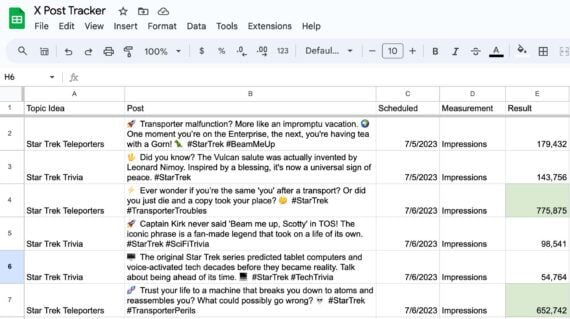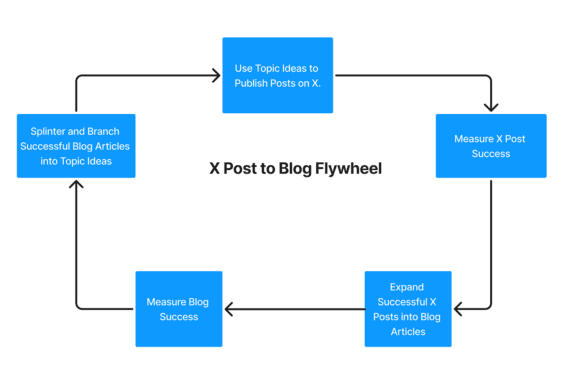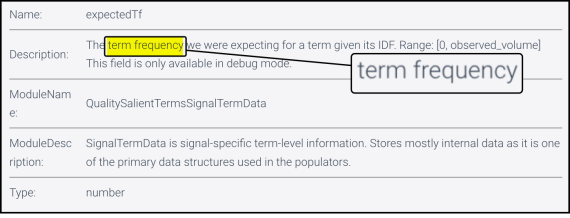Content and social media are distinct marketing disciplines with a shared problem. Both must produce engaging material despite limited time and money.
Social media is essential for consistent and quick engagement and brand building. Content marketing is vital for SEO and long-term relationships, leading to repeat sales.
Both are necessary and resource-intensive.
Combining the two into a single workflow can reduce the demands of each.
Deadline Chaos
An ecommerce business might need to post upward of six times daily to establish a following on X or Threads and perhaps four videos on TikTok and Instagram.
Assuming they maintain this schedule every day, the company’s marketers face more than 200 weekly social media deadlines.
Meanwhile, the team must attract shoppers elsewhere, boost search engine rankings, and develop lasting customer relationships through blog posts, articles, podcasts, videos, and landing pages.
That’s a lot of content.
The most difficult parts are developing content ideas, producing them, and measuring the results.
A Flywheel
A business flywheel is a circular process wherein each step leads to the next.
The concept has been around for decades. Jeff Bezos famously used a flywheel to describe Amazon’s business model. Author Jim Collins wrote a book about the topic, prompting many businesses to adopt it for routine processes.
Applying a flywheel to social media and content marketing, we can focus on three steps:
- Content ideas,
- Content creation,
- Measurement.
To illustrate, let’s develop a flywheel for articles and social media posts. I’ll focus on two of our three steps: content ideas and measurement.
Let’s assume we work for a content-then-commerce business that sells licensed, science-fiction-themed products. The company attracts potential customers to its website via content that contains related products for purchase.
Here are the steps.
1. Publish a post on X
Take a topic idea and compose an X post. Give the post a measurable call to action, such as “Subscribe to email list,” “Request a sample,” or “Leave a comment.” Record the post in a spreadsheet.
Repeat this step six times per day.

Log X posts in a spreadsheet and record their performance. Here the most successful posts were about transporter failures. Click image to enlarge.
2. Measure performance
Seven days after it’s published, measure each post’s results to identify popular topics for humans and X’s algorithm. Add the metric to the spreadsheet.
3. Expand successful X posts into articles
Repurpose top-performing X posts or topics into on-site, long-form articles. Optimize each with organic search keywords.
For example, a successful X post about death in a Star Trek transporter might lead to an article titled “Death and Other Problems with Star Trek’s Transporters.”
Record the articles in the spreadsheet and set a goal for each, such as site traffic or email subscriptions.

The topics of successful X posts are expanded into articles.
4. Measure article performance
Thirty days after publication, track the article’s performance against its goal. The aim is to identify the best performers.
5. Splinter and branch successful articles
For each successful article, identify at least five “splinter” and five “branch” topics. A splinter topic may derive from a sub-heading, while a branch could be a parallel concept.
A splinter topic for the article “Death and Other Problems with Star Trek’s Transporters” could be something like “Star Trek’s Transporters Create an Existential Identity Crisis.” Use each splinter or branch idea for an X post.
This closes the flywheel from an X post to an on-site article and back.
We started with an idea, created an X post, and repurposed it into blog articles, which spawned new X posts.
Our example lacks content creation, although the pattern would be similar. We could add the “Content creation” step at “Publish posts on X” and “Expand successful X posts into blog articles.”

The flywheel starts with an idea for an X post and expands it into articles, which spawns new ideas for X posts.






